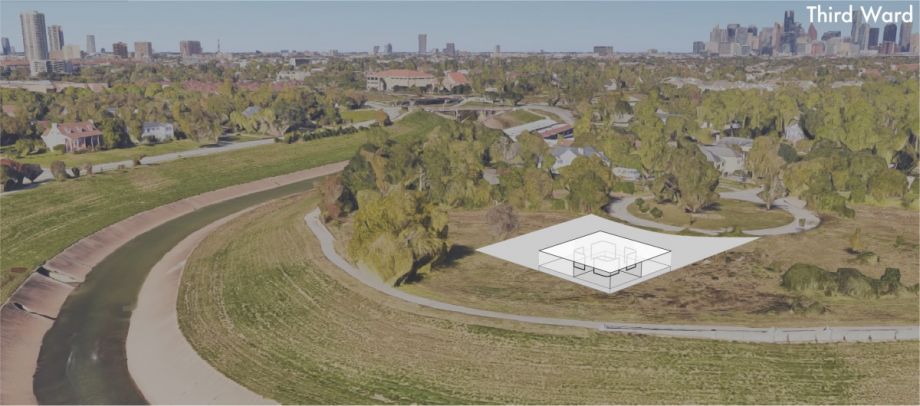In a city with what Rice University architecture graduate David Richmond calls “an infrastructure of staying inside,” Houston’s ice houses stand out. While much of downtown is connected by underground tunnels that keep workers sheltered from the sun, and while many commute via air-conditioned car to air-conditioned office, Richmond says, “the ice houses are a rare public space in which you are taking in the city and the weather and all of those elements.”
Richmond, who’s a project manager at Metalab Studios in Houston, thinks the ice house form could be the basis of a new type of public gathering space along Brays Bayou.
A place where residents could buy ice in the era before refrigeration, many of the houses have since been converted into humble bars selling ice cold beers. They’re simple spaces, spread out through Houston’s neighborhoods, open to the elements via their retractable garage doors. In Houston, this permeability makes them unique, says Richmond, who spent a year photographing over 40 ice houses with the support of a Rice Design Alliance grant.
“Opening up to the city is so rare here,” he says. As he put it in an article for the Houston Chronicle last year: “The simple move of leaving those [garage] doors open overturns the last 50 years of Houston living — hot days stay hot, ugly streets are visible, bad smells can linger, and humidity can ruin your day.” They’re a far cry from the hermetically sealed office buildings of downtown.
And yet, they’ve retained their place in the Houston architectural lexicon. Though several historic ice houses closed during the year Richmond spent photographing them, a handful of bars emulating their form opened as well, two of them in former gas stations. To qualify as part of this “evolving type,” the ice houses Richmond documented needed to have a porous relationship between interior and exterior, and to be a true neighborhood bar — a standalone, not in a row of bars and restaurants.
In his research, he paid attention to both the bars’ interior and their view of the outdoors. Because of Houston’s lack of zoning, and because ice houses provided a vital service and were thus distributed throughout the city, they tend to be located in unexpected places — under freeways, in medians between high-speed roads, landscapes normally reserved for cars.
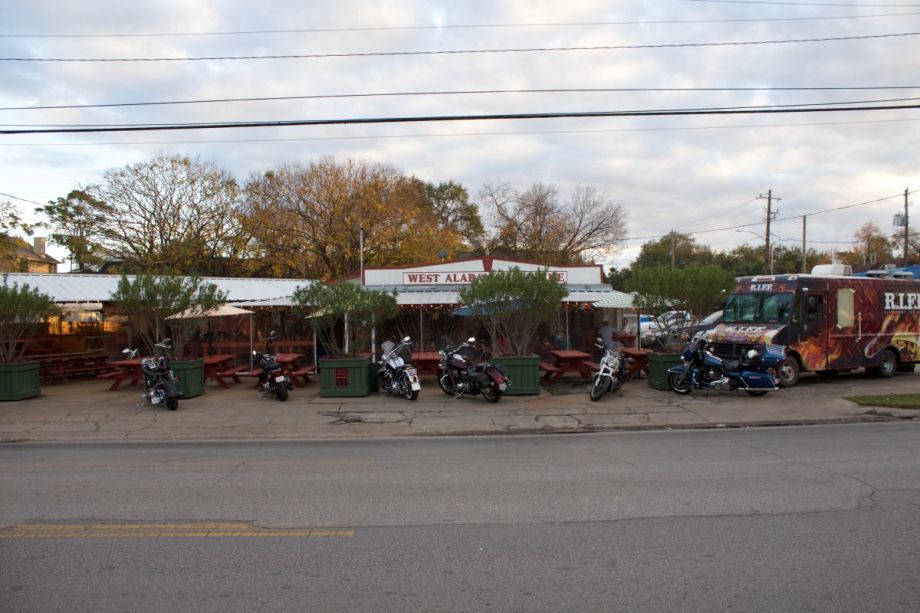
Exterior of an ice house turned bar (Photo by David Richmond)
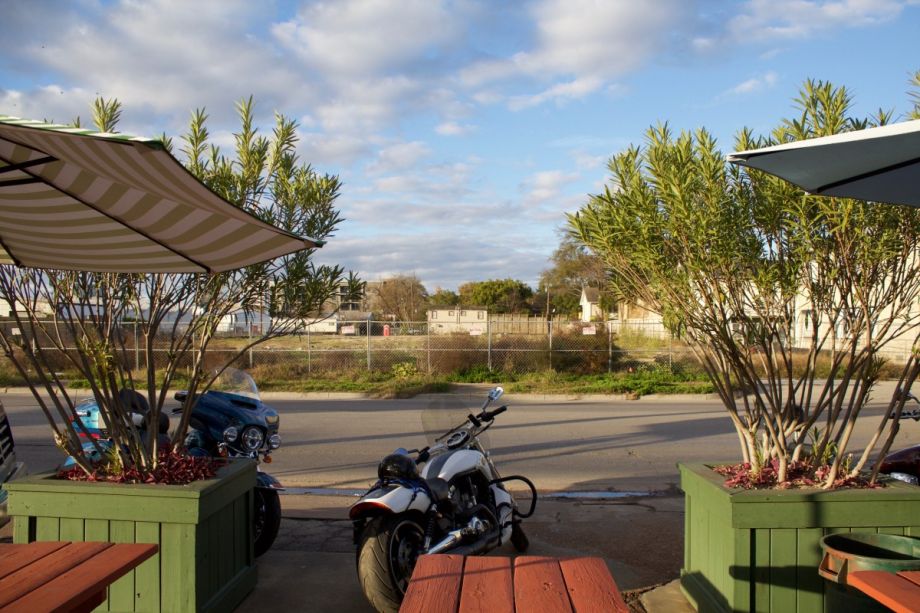
View across the street from the same ice house (Photo by David Richmond)
Richmond’s goal, though, wasn’t just to glorify these old beer shacks, but to explore how their permeable form might be applied to other city spaces actually meant for gathering. He hit upon the extensive bayou restoration projects currently underway in Houston, transforming the concretized bayous from purely drainage ditches into a series of parks and greenways.
“Having hike and bike trails is really great for activity in the neighborhood, but if you don’t have a place to go to, it ends up being a path without a node,” says Richmond. Buffalo Bayou — which runs through downtown, touching mostly wealthy, white neighborhoods — has received the most visible arts and recreation projects, but Richmond thinks Brays Bayou, which runs through some of the city’s most diverse ethnic enclaves, could use more such nodes.
In a May article for the Houston Chronicle, he proposed a series of six pavilions along the length of the bayou, based on the ice house form. Each is, as Richmond calls it, a simple study of a square: a steel square in the center, partially enclosed by a glass square, outfitted with curtains that can create yet one more layer of separation between interior and exterior. Though Houston is the United States’ most diverse city, Richmond says its neighborhoods look architecturally rather similar. He doesn’t want to dictate how neighborhoods would use their squares, so each would customize it to their needs.
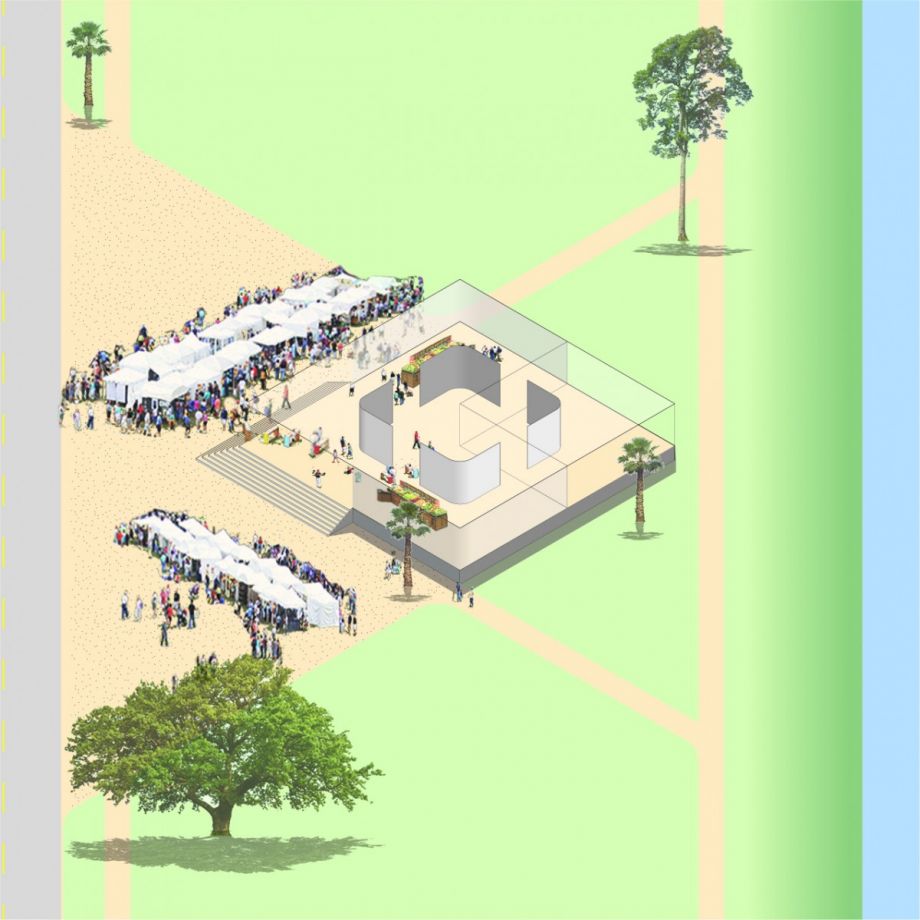
Rendering of an ice house pavilion used as a farmers market (Photo by David Richmond)
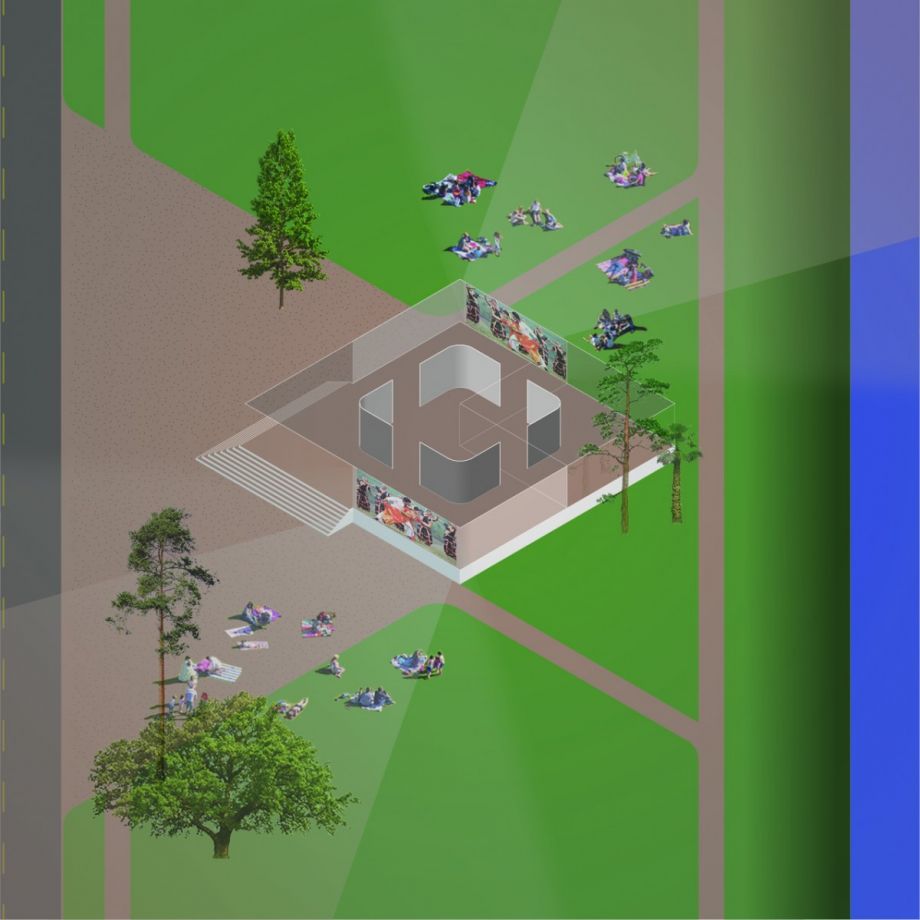
Rendering of an ice house pavilion on a movie night (Photo by David Richmond)
“One neighborhood might need fresh produce and a farmers market type. One might be more useful to have a project like Project Row Houses, that in addition to art provides childcare services and career building for young mothers in the Third Ward,” says Richmond. “I wanted to create one form and copy it six times so that the form was always the same, and differences would be purely from the neighborhood it was in.”
Richmond notes that Houston, with its sprawl and open space, has a unique opportunity; while dense East Coast and European cities had to set aside public squares early in their histories, Houston has the land to build them up from scratch. After his recent article was published, the Houston Parks Board reached out to Richmond to have a conversation about a potential collaboration, though Richmond does not yet know what will become of it.
Jen Kinney is a freelance writer and documentary photographer. Her work has also appeared in Philadelphia Magazine, High Country News online, and the Anchorage Press. She is currently a student of radio production at the Salt Institute of Documentary Studies. See her work at jakinney.com.
Follow Jen .(JavaScript must be enabled to view this email address)

